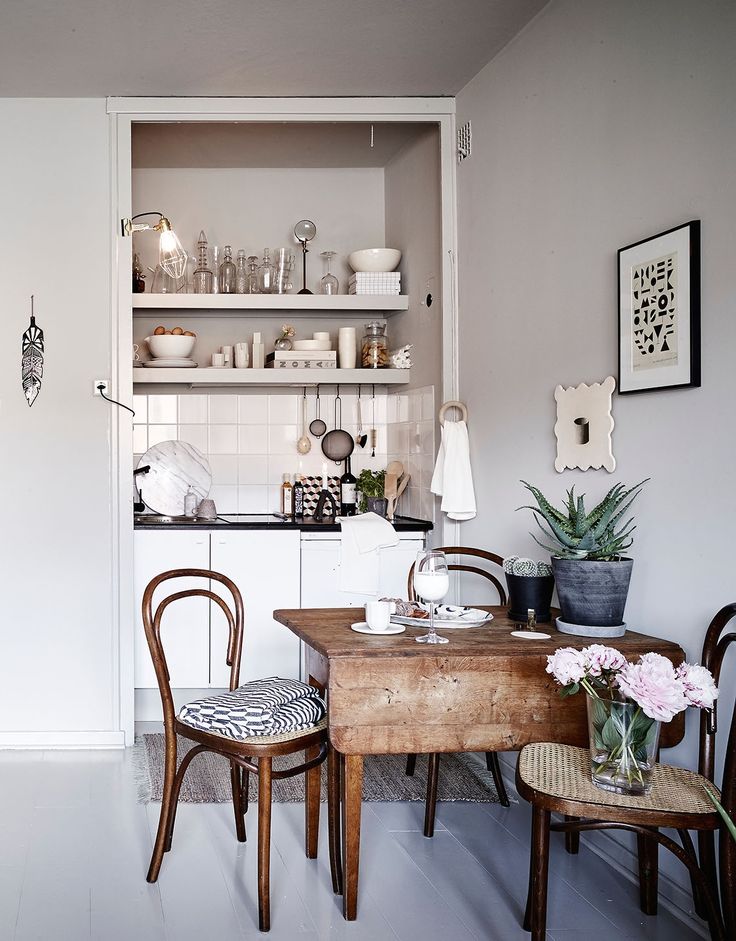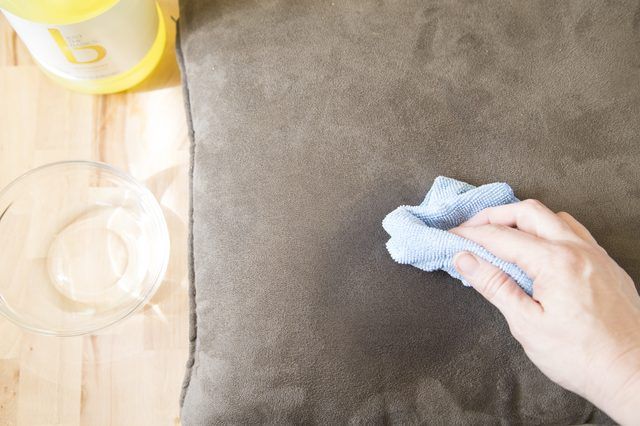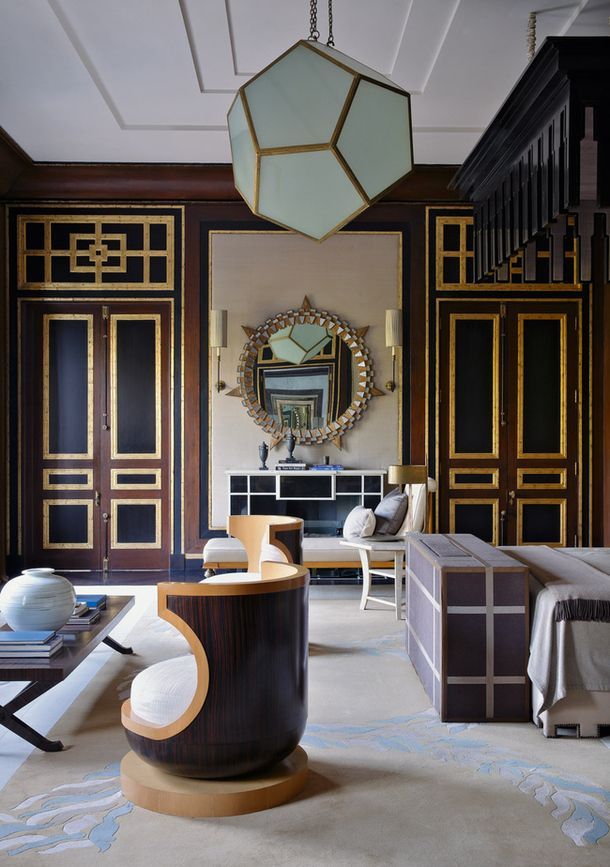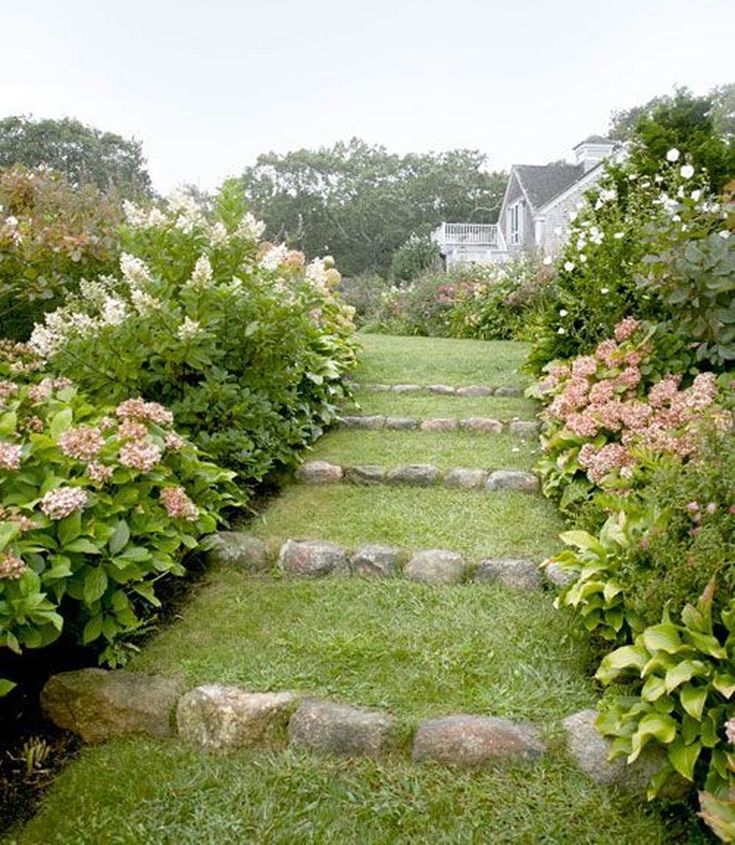Decorate with antiques
12 design tips plus buying advice |
(Image credit: Kitesgrove)
There's no doubt that decorating with antiques has seen a surge in interest in recent times. Whether it’s a case of incorporating heirlooms, or sourcing ‘new’ antique pieces, they have much to bring to any home.
'Connecting to the past with personal items that have a story to tell helps to provide a sense of history and connection,' says interior designer Henriette von Stockhausen.
Here we share expert interior design advice on decorating with antiques and how to source the perfect piece including buying online.
Decorating with antiques
Incorporating antiques into a modern interiors scheme will add character, depth and a cultural element to the space, according to London-based design studio Kitesgrove . Unique and unexpected pieces can be mixed with contemporary finds to create an indulgent, calm and inviting home that values longevity over short-lived wow factor, say these designers.
To reap these benefits, discover how to go about decorating with antiques from the experts.
1. Bring in antiques to lift a room
(Image credit: Kitesgrove)
One of our favorite ways to make a home look expensive, decorating with antiques can achieve different emphases, depending on what is selected.
‘Juxtaposing antique finds with modern furniture will lift a space; a bold antique brass pendant light will make a statement and catch the eye whilst an oversized vintage rug in muted colours will anchor a space allowing modern furniture and accessories to take center stage, says Clara Ewart, head of design, Kitesgrove.
2. Consider re-upholstering antiques
(Image credit: VSP Interiors)
Think about changing the upholstery of antique pieces – which can have a dramatic effect.
'I find that antiques have a timeless quality that is difficult to achieve with most modern pieces, and the depth that they give to a scheme provide unparalleled comfort,’ explains Henriette von Stockhausen, creative director of VSP Interiors . ‘However, often it is the juxtaposition of old and new that creates that certain special energy.
‘However, often it is the juxtaposition of old and new that creates that certain special energy.
'For a contemporary feel, you can add a wacky fabric to repurpose an inherited piece. Alternatively, if you have a funky mid-century piece but don't like the upholstery, use a beautiful antique fabric on it to add new texture and personality. Repurposing new with old or old with new both really work well.
'I generally try to create interiors that reflect my clients’ lives and personalities and antiques certainly help with this storytelling,’ Henriette continues. ‘Whether choosing one piece in an otherwise modern interior for major impact or a whole house for settled comfort, it’s about blending and mixing periods and styles to make the space come alive.'
3. Ensure your interiors are liveable, not contrived
(Image credit: VSP Interiors)
It’s important to avoid pastiche when decorating with antiques. 'Most of us are not trying to recreate an accurate historical interior but a liveable characterful space that is comfortable as well as beautiful,’ says Henriette. ‘Nothing should feel too contrived, rather it should be playful, captivating our interest wherever we look.
‘Nothing should feel too contrived, rather it should be playful, captivating our interest wherever we look.
'Almost anything goes and there are no hard and fast rules, other than whether the piece speaks to you and you like it. If it is special to you, you will find a space where it can shine.
'To create this, also consider architectural salvage and antique fabrics. They can add that sense of connection and lived-in feel that we all crave without looking too staid.
'At the same time they can also be easily mixed into a more contemporary interior – as in this bedroom above – if you are unsure about antique furniture.'
4. Use antiques as accent pieces
(Image credit: Kitesgrove)
Don’t rule out using smaller items: these can still make an impact within interiors. ‘Smaller antiques work well as accent pieces, whether it’s a beautiful vase, a side table or a light,’ says Clara Ewart. ‘These little details will make your home feel as if it has organically come together over time. ’
’
5. Start your scheme with a lead piece
(Image credit: VSP Interiors)
Where to begin a room design when you’re decorating with antiques? 'An antique rug is often my starting point for an interior: it might be a client's existing rug or I might source one and build a scheme around it,’ says Henriette. ‘Just like a lead fabric, the rug should have at least three colors in the design to draw upon and build upwards.'
6. Take the home’s architecture into account
(Image credit: Kitesgrove)
Take your cue from your home to create the best effect when you’re decorating with antiques.
‘When styling antique pieces, it is important to respect the architecture of the house you are decorating,’ says Clara. ‘Some houses are well suited to lots of antiques whilst others will benefit from a mixture of vintage and modern.’
7. Bring antiques into kitchens and bathrooms
(Image credit: VSP Interiors)
You might want to follow Henriette’s lead, focusing on the kitchen and bathroom as a place to incorporate antiques. 'I always try to put something old into a kitchen and bathroom: it helps that not everything is built in or too matchy matchy,’ she says. ‘I might use a dresser or a chest of drawers or adapt a piece, maybe adding glazed doors to a bookshelf or converting a console to make a washstand.'
'I always try to put something old into a kitchen and bathroom: it helps that not everything is built in or too matchy matchy,’ she says. ‘I might use a dresser or a chest of drawers or adapt a piece, maybe adding glazed doors to a bookshelf or converting a console to make a washstand.'
Antique furniture is also one of our favorite sustainable kitchen ideas – they bring instant charm and personality to the space while also helping you do your bit for the planet.
8. Swap modern lighting for antique
(Image credit: Kitesgrove)
It’s perfectly feasible to re-use old lighting. ‘Antique lighting is a wonderful way to incorporate vintage pieces into a room, not only adding to the aesthetic but providing a key functional element as well,’ says Clara. ‘Most vintage lamps can be easily re-wired, so if you find something to suit your style, don’t be put off buying it if a little work is needed to make it good as new again.’
(Image credit: VSP Interiors)
Antiques don’t have to fulfill their original function. ‘Old paravent screens can become cupboard doors, rugs can become headboards, urns can become lamps and tables can become kitchen islands,’ says Henriette. ‘Creativity is key – let your imagination run wild and tell your own story!'
‘Old paravent screens can become cupboard doors, rugs can become headboards, urns can become lamps and tables can become kitchen islands,’ says Henriette. ‘Creativity is key – let your imagination run wild and tell your own story!'
10. Embrace upcycling
(Image credit: Kitesgrove)
Neither do pieces with a history have to be restored to an original finish, including when you’re buying art. ‘Don’t be afraid to upcycle: a lick of paint can transform old wooden furniture, giving it a renewed energy,’ says Clara. ‘We love to make an antique feel very modern with a gloss finish in a bright colour. Likewise, a modern frame on a traditional artwork can give it a new identity.’
11. Mix contemporary with classic
'The wonderful thing about working with antiques is that there are no rules – a piece from the 19th century can look as good next to something super contemporary as it would amongst items from its own era,' says Emma Sims Hilditch, interior designer.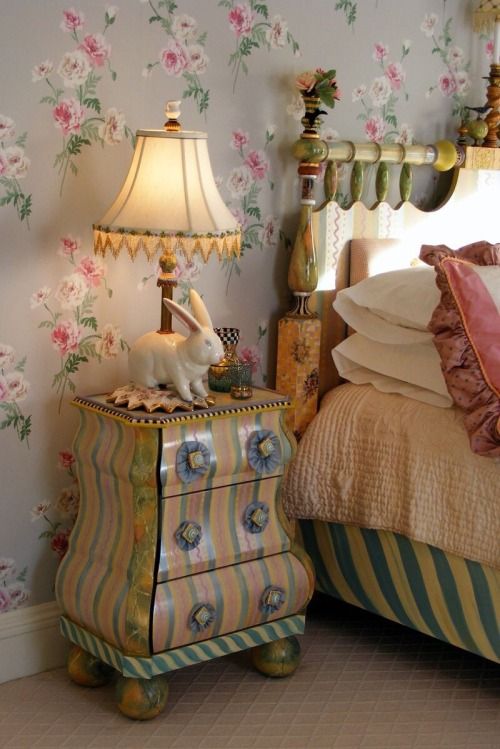
Emma likes to source contemporary art as a way to mix things up and keep an interior fresh and intriguing.' I love mixing antique furniture with modern art – this can look so elegant. My philosophy on buying antiques and fine art is to buy it if it immediately appeals. Go with your instinct, as you are the one who is going to live with it.'
12. Think about restoring unloved items
'Don’t be afraid of buying a piece that needs restoration if it has good bones,' advises Emma. It's a bit like buying a house with decent foundations, you're investing in something that's likely to stand the test of time.
'Shopping for antiques can be daunting when items require work doing but they're often more rewarding too. There are some brilliant furniture restorers and it feels right that we should support these very talented craftspeople in their trade.'
How to source antiques online and off
(Image credit: Kitesgrove)
More of us than ever are buying antique furniture online. The increase in interest in antiques is largely due to a focus on sustainability and the desire of the design savvy to bring character into their homes.
The increase in interest in antiques is largely due to a focus on sustainability and the desire of the design savvy to bring character into their homes.
These are the best ways to source pieces you’ll love for years to come both in person and online.
Where to browse for antiques
(Image credit: Kitesgrove)
‘There are many places to find wonderful antiques and you don’t need to have a big budget to find pieces which can be restored, re-upholstered and renewed whether you choose to go to a decorative fair or an auction house,’ says Clara Ewart. ‘Re-purposing one-off pieces of furniture or lighting will also provide a great sense of satisfaction to be continuing the life of an item which may otherwise have been discarded.
‘There are some great finds at flea markets and antique stalls; be prepared to visit more than once as there will be new items available each week from various sellers. Auction houses hold some really special pieces and you can start off at smaller, local auction houses rather than having to go straight to Christie’s depending on budgets. ’
’
(Image credit: Kitesgrove)
Find fairs in the US and around the world via NAADAA (the National Antique & Art Dealers Association of America) together with a list of members. And visit ADA (Antique Dealers’ Association of America) for events and a directory of members.
Europe is a rich source of antiques if you like the idea of travel, and don’t mind the shipping costs to bring purchases home. The most affordable antiques can be found in the European flea markets (Lille, Munich and Amsterdam are the most famous). Brussels has a wonderful selection of antique shops selling very reasonably priced antiques and mid-century pieces.
If you’re visiting the UK, the IACF (International Antiques & Collectors Fairs ) are held in seven locations across England. In London, for a one-stop shop, you can’t do much better than visiting the Battersea Decorative Antiques & Textiles Fair .
There are also pockets of the UK where dealers congregate: Lillie Road (Catherine Despas, Dorian Caffot Defawes, M. Charpentier, Puckhaber, Streett Marburg) and Pimlico Road (Howe, Gallery 88) in London; Arundel (Spencer Swaffer) and Petworth (John Bird, Augustus Brandt, Kiki Design) in Sussex; and Tetbury in Gloucestershire (Lorfords, Brownrigg, AntiqBR) are all places we regularly visit.
Charpentier, Puckhaber, Streett Marburg) and Pimlico Road (Howe, Gallery 88) in London; Arundel (Spencer Swaffer) and Petworth (John Bird, Augustus Brandt, Kiki Design) in Sussex; and Tetbury in Gloucestershire (Lorfords, Brownrigg, AntiqBR) are all places we regularly visit.
Check before buying
‘Be sure to check the authenticity of the antiques you purchase – there should be labels, hallmarks or details of the maker’s location and often a certificate of authenticity,’ says Clara.
Go for what you love
‘Most trends tend to come back into fashion, so we advise buying something you love when you see it without getting too distracted as to whether it will suit the design scheme you have planned – if anything it will enhance the overall look providing rich textures and a connection to the past,’ says Clara.
How to shop for antique furniture
Camilla Clarke and Ottalie Stride, co-creative directors from interior design studio Albion Nord , along with Emma Sims Hilditch of Sims Hilditch interior design agency explain how to source antique pieces.
1. Pay the antiques dealer a visit
It was during lockdown when we saw a boom in antiques being sold online. Anywhere from a weekend hobbyist selling bric-a-brac, to antique experts, who once may not have used social media as a platform, selling their wares to the masses online. 'The internet aside, nothing beats seeing a piece in the flesh.' says interior designer Emma Sims Hilditch.
2. Buy antiques online
For all of the benefits of seeing items in real life, one unbeatable benefit of beginning your search online is how much of the country – or the world – you can cover from the comfort of your own home.
'The internet has opened up a new world of sourcing. A wonderful resource for designers as well as the public is 1stDibs , for both designers and the public. The images are well shot, the categories are well laid-out and I can spend hours looking through the myriad of beautiful pieces.' explains Emma.
3. Only buy what you love
(Image credit: Albion Nord)
Ensure that what you’re buying is something that you love.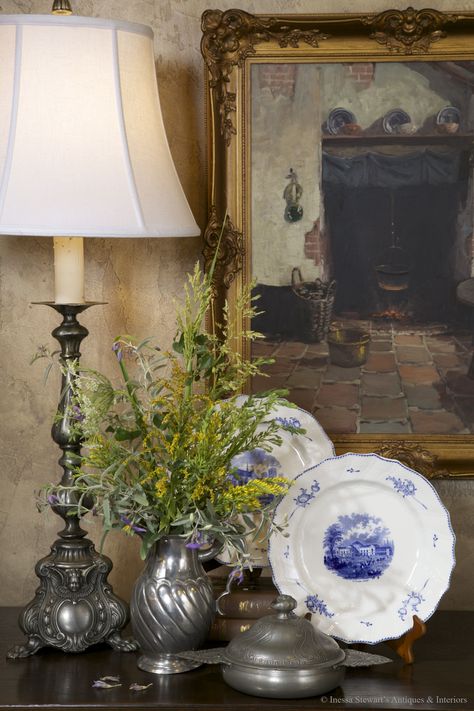 Antiques are hardy and have endured the elements this far; they are likely to fail you now. By choosing something that you’re really fond of from the off will likely mean that you will be pleased with the piece for years to come.
Antiques are hardy and have endured the elements this far; they are likely to fail you now. By choosing something that you’re really fond of from the off will likely mean that you will be pleased with the piece for years to come.
4. Check the authenticity of the seller
Just like buying in person, check the credibility of the seller by reading reviews and confirm if they have affiliations with large, regulated bodies such as NAADAA or ADA in the US, or LAPADA or BADA in the UK.
Trustworthy dealers are likely to help with condition reports, will gladly impart their extensive knowledge on the piece and provide videos to help you with your purchase.
5. Be aware of hidden costs
(Image credit: Albion Nord)
Consider hidden costs when buying online; shipping, restoration and re-upholstery are the most common costs that you should look out for.
6. Ask for a receipt
Always get a receipt when you buy online. This will protect you should anything go wrong with the piece you bought.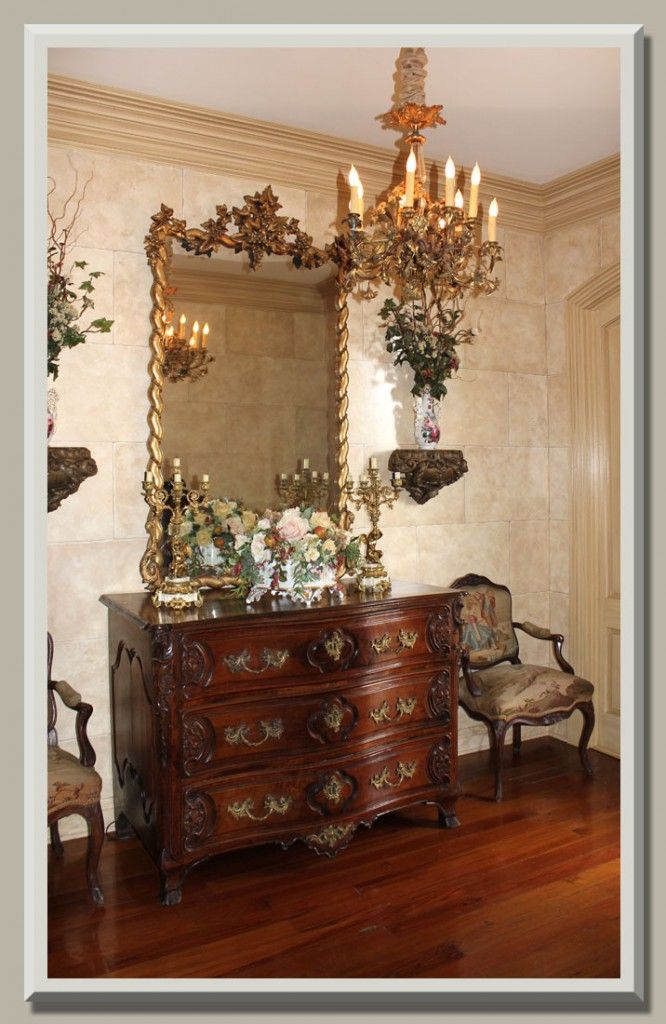
7. Measure everything
(Image credit: Future.Brent Darby)
Always check the size of a piece and whether fits the space you have in mind. A helpful tip is to cut out a card or paper template and put it in the spot you have in mind for complete peace of mind.
8. Try to see antique furniture in person
If possible, always try to see the piece you hope to buy in person. The quality of an item may not be accurately portrayed in a photograph and seeing it up close will give you a peace of mind before you make the purchase.
9. Ask for detailed photographs
Check the condition of the piece as far as possible. Reports and detailed photographs should be available to you as a buyer and you should request a video or additional photograph if there are angles which haven’t been covered.
Key information should be provided in the description of a piece, such as age, timber, condition and if any restoration has been conducted over the years.
10.
 Be mindful of cheap imitations
Be mindful of cheap imitationsValue often reflects quality. Buy cheap, buy twice.
How do you decorate with antiques?
To decorate with antiques, mix these pieces with newer ones, keeping in mind that the aim should always be liveable rooms not a historical facsimile.
'Whether they are inherited pieces that have been handed down through the generations or items that have been collected because they mean something to the owner, the result is the same,’ says designer Henriette von Stockhausen of VSP Interiors . ‘I know that personally I could not decorate a house, let alone live in one, without antiques!’
(Image credit: Sims Hilditch)
'I always try to include at least one antique piece of furniture in a room' says Emma Sims Hilditch, Founder & Creative Director, Sims Hilditch.
'They [antiques] offer such depth and gravitas, and help a scheme feel grounded and unique.' she explains.
When discussing why antiques are important, Emma adds; 'it is a wonderfully sustainable way to reuse old furniture, often so beautifully constructed and made with very high quality timbers. '
'
Are antiques coming back in style?
'I always try to include at least one antique piece of furniture in a room' says Emma Sims Hilditch, Founder & Creative Director, Sims Hilditch .
'They [antiques] offer such depth and gravitas, and help a scheme feel grounded and unique.' she explains.
When discussing why antiques are important, Emma adds; 'it is a wonderfully sustainable way to reuse old furniture, often so beautifully constructed and made with very high quality timbers.'
12. Think about restoring unloved items
Lucy Searle has written about interiors, property and gardens since 1990, working her way around the interiors departments of women's magazines before switching to interiors-only titles in the mid-nineties. She was Associate Editor on Ideal Home, and Launch Editor of 4Homes magazine, before moving into digital in 2007, launching Channel 4's flagship website, Channel4.com/4homes. In 2018, Lucy took on the role of Global Editor in Chief for Realhomes. com, taking the site from a small magazine add-on to a global success. She was asked to repeat that success at Homes & Gardens, where she has also taken on the editorship of the magazine.
com, taking the site from a small magazine add-on to a global success. She was asked to repeat that success at Homes & Gardens, where she has also taken on the editorship of the magazine.
With contributions from
- Sarah WarwickContributing Editor
Tips on Decorating with Antiques
Decorating with antiques comes from our innate need for a connection to the past, to believe in a story, and create a sense of history in the space we inhabit. So often, Saturday strolls lead to the local flea market or antiques store and then it happens—love at first sight strikes with a hidden treasure. Some are lucky enough to have antiques gifted from generations past, while others fancy themselves collectors, plundering through markets to find that perfect piece. Humans have a soft spot for things that have endured longer than themselves, and a well-crafted dresser or dining table will far outlive the fast-paced trends of today and tomorrow.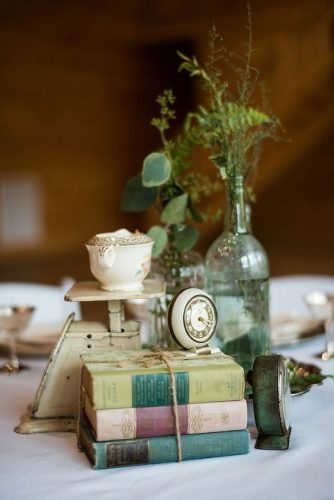
Antiques are generally categorized to be objects aged 100 years or more, while anything older than 20 years is considered vintage. However, decorating with antiques and vintage furnishings is one in the same—blending the old world with a sense of the new. Antiques are meant to enliven a space with context and history, not to create a museum with velvet ropes. As antiques dealer-turned-designer Rose Tarlow dictates in her book The Private House, "The juxtaposition of contemporary pieces with antiques makes a room young and alive. We should not attempt to create museums, but rather should strive for comfortable living spaces of character and beauty."
The only rules to finding the perfect antique for your space are to simply follow your gut and keep an open mind on how a piece can be used in a space. If you love it, you will always find a place for it.
Statement Pieces
Nickolas Sargent
Sometimes one good piece says it all.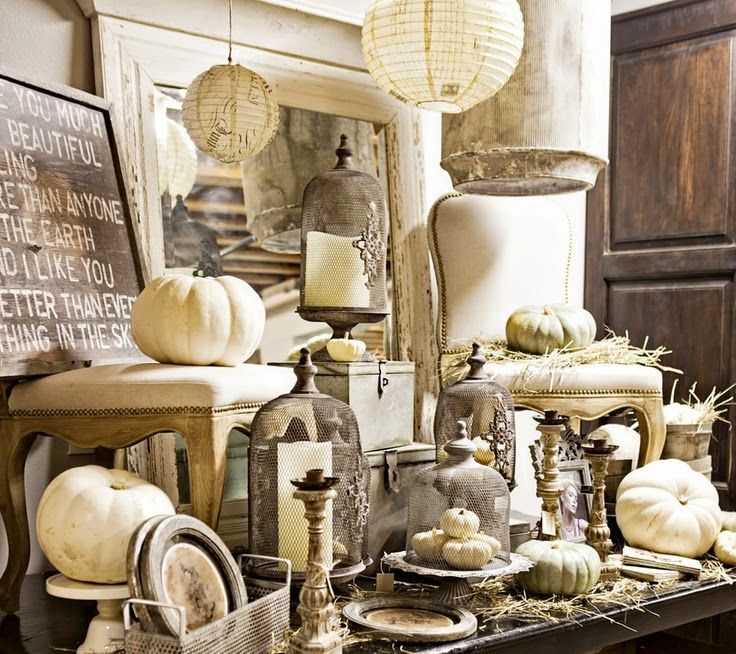 Sarah Blank masterfully placed a European tailor's table from Authentic Provence as the centerpiece of this kitchen at the Kips Bay Show House in Palm Beach. Not only is it functional for cook prep, but it also serves as a place to entertain. Bold-hued cabinets keep the space feeling fresh, while the antique island grounds the kitchen with a more traditional approach
Sarah Blank masterfully placed a European tailor's table from Authentic Provence as the centerpiece of this kitchen at the Kips Bay Show House in Palm Beach. Not only is it functional for cook prep, but it also serves as a place to entertain. Bold-hued cabinets keep the space feeling fresh, while the antique island grounds the kitchen with a more traditional approach
Nickolas Sargent
Antiques also have the power to keep a room from feeling too strict. For example, the ceramic tiger from Eleish van Breems, peaking conspicuously from beneath the coffee table, adds a bit of whimsy in this writer's retreat by Kevin Isbell.
Accent Pieces
Nickolas Sargent
Antique furniture does not always need to be the centerpiece of the room but can instead add more subtle character in the form of accent tables, accessories, and rugs. Colette Van Den Thillart brings a sense of humor to her rooms with avant-garde finds like this monkey console table from Circa Who.
Francesco Lagnese
Here, Bunny Williams highlighted this Palm Beach guesthouse's Mediterranean influence with a mirror and side table from John Rosselli.
Reproductions and Inspired By
Annie Schlecter
Reproductions tend to get a bad rap, but designers like Anthony Baratta often note how it's important to focus on how the piece makes you feel rather then when it was made. "The history of furniture has been fueled by them," says Baratta. "My feeling is if something is lovely, it's lovely. Everyone is hung up on 'period appropriate,' but that's really not how people live now."
Good furniture design has achieved many iterations through the decades, and each remake contributes a new layer of history to a particular design. Baratta, as the first Designer in Residence of the Colonial Williamsburg home, was tasked with reinventing the space in such a way that honors its history but freshens it with a modern perspective. This meant embracing reproductions to achieve the desired effect.
This meant embracing reproductions to achieve the desired effect.
Nickolas Sargent
Inspired by her love of antique Portuguese tile, Alessandra Branca partnered with de Gournay to create her own dreamy wallcovering for this Palm Beach master bedroom.
Francesco Lagnese
Thomas O'Brien's most recent collection with Century Furniture harkens back to furniture typically found in seaside homes spanning the 19th century to the midcentury period. Take this 1960s-inspired Dorset Chair, for example, that blends conventional wicker and wrought iron with a whole new approach to repurposed design. It's a new piece, yet it instantly feels like something that's been in a home for decades.
Repurposed into New
David Tsay
Peter Dunham is not afraid of any kind of architectural salvage, including 50 feet of walnut bookcases and paneling dismantled in England and reconstructed in this Newport Beach home.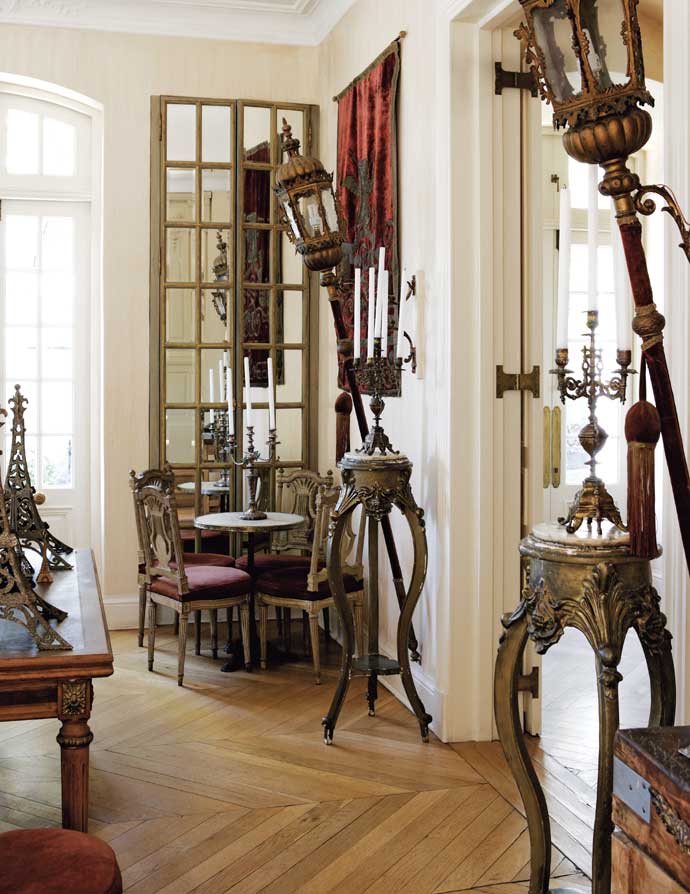 Dunham also repurposed a Georgian sideboard by cutting the legs off and using it as a desk.
Dunham also repurposed a Georgian sideboard by cutting the legs off and using it as a desk.
David Tsay
Later in the same home, Dunham turned French leather wrestling mats into a large ottoman for the living room.
Miguel Flores-Vianna
Charlotte Moss transformed a set of lacquered chinoiserie panels into closet doors for a guest room in her own home.
Layering
David Tsay
Layering older pieces with new design is certainly one of the more interesting ways to embrace antiquities in your home. A master of this method, Peter Dunham emphasizes the importance of introducing antiques in a new home. "You want a place to feel rooted," he says. "I layer reclaimed things so you can't tell what's new and what's old."
Dunham's design for this living room includes vintage chintz on the armchairs and an ottoman covered in a Flemish tapestry. A 19th-century circular mirror found on a shopping trip in Avignon, France, plays beautifully with Jennifer Bartlett's modern artwork. A new seagrass rug keeps the room feeling 'of today,' but the subtle slub texture is a nod to the other more organic and antique elements in the room.
A 19th-century circular mirror found on a shopping trip in Avignon, France, plays beautifully with Jennifer Bartlett's modern artwork. A new seagrass rug keeps the room feeling 'of today,' but the subtle slub texture is a nod to the other more organic and antique elements in the room.
Helenio Barbetta
Marco Bay masterfully layered found objects and family antiques in his dreamy Portofino escape. A bit of luck befell Bay when he came across a set of Gianfranco Frattini chairs discarded by a local dance club for the dining table. Ladder-back seats inherited from his parents grace the entryway.
Helenio Barbetta
Bunny Williams artfully mixed old with new in this Palm Beach retreat. A contemporary resin table coexists with an 18th-century Italian console that frames a modern black and white photograph.
Francesco Lagnese
The Antique Home
Dylan Thomas
Introducing the 'antique-obsessed' who can't help but cover the whole house in aged glory from floor to ceiling.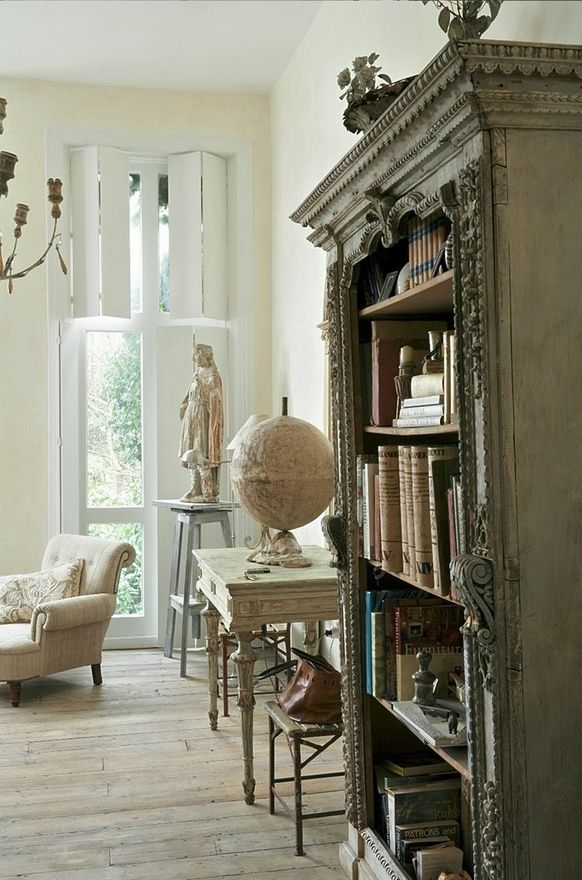 Take designer Micky Hurley's reinvention of his 17th-century Paris flat. His wife, Malu, describes his love of antiquities: "Micky believes the warmth and depth that antiques can give a space is immeasurable—they make it feel lived-in and personal. They are pieces you want to pass on." A French school 18th-century oil painting hangs above a tufted sofa found at Bonham's auction house.
Take designer Micky Hurley's reinvention of his 17th-century Paris flat. His wife, Malu, describes his love of antiquities: "Micky believes the warmth and depth that antiques can give a space is immeasurable—they make it feel lived-in and personal. They are pieces you want to pass on." A French school 18th-century oil painting hangs above a tufted sofa found at Bonham's auction house.
Annie Schlechter
A keen eye for 18th- and 19th-century antiques, the owner of this Hudson Valley home understood how to recreate a storied pedigree. The house may be new construction, but you would never know it with the infusion of antiques and historical references. The house appears to have always been there. In the living room, a mahogany library table once belonging to the Marquess of Downshire intermingles with a more modern Murano glass chandelier. New elements have been chosen carefully to fit the period furniture like muted de Gournay wallpaper and Prelle curtains to add instant heritage to the space.
Collections
Annie Schlechter
Collecting no longer makes a hoarder. Flaunt it if you've got it! Collections of pottery or textiles make wonderful displays, as exemplified in Philip Mitchell's weekend Canadian cottage.
Annie Schlecter
Mixing Styles and Periods
Francesco Lagnese
Combining antiques from different epochs or from different countries may initially feel bazaar, but there is elegance in the madness. Bunny Williams placed a French Regency console with an 18th-century English mirror to perfect effect in this Palm Beach grand entryway.
Lisa Romerein
Homeowners Brooke and Steve Giannetti mixed both Swedish, French, and American antiques in their restored Litchfield County Connecticut Home.
Sara Clark
Sara Clark is the Style Assistant at VERANDA, where she writes about interiors, fashion, style, and the latest design trends.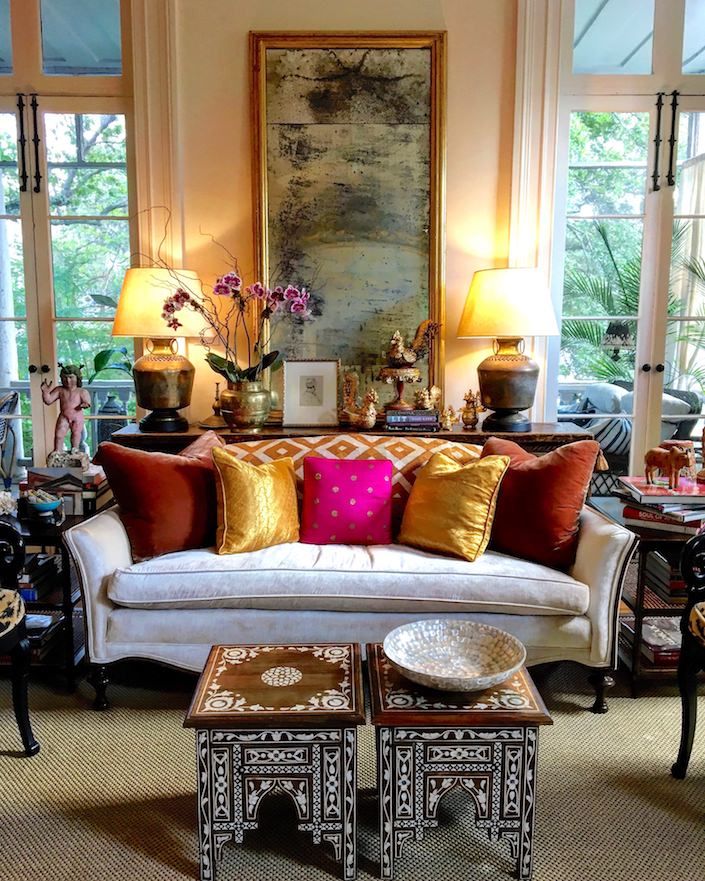
How to decorate your house with antiques, collectibles?
Author:
Pavel Ying
Worst Best
| Trends - House |
| 25.08.2021 14:35 |
|
Decorating with vintage and antique furniture and collectibles is not limited to historic homes or formal rooms. A skilled decorator can fit antiques into almost any decor style, including modern ones. Knowing that every vintage treasure you find has a story and an untold story adds to the appeal of decorating with elements that have the allure of the times. Finding new uses for old things is the cornerstone of decorating with budget antiques or old used building materials. Where to look for Repurposing Grouping Mixing Tags:
|
Did you like it? You can easily and quickly share material with your friends in your favorite services:
Add a comment
Join now!
How to buy and wear antique jewelry
An antique necklace, an old gold chain, earrings that have lived for more than a dozen years - all these are not just dusty items, they are a unique decoration of the image and style, a small investment and replenishment of a personal collection.
 Antique jewelry helps to express individuality and sense of taste, emphasize attention and respect for objects of the past. Almost every woman wants to have antique gold earrings or other pieces of jewelry from past eras in her treasury of jewelry.
Antique jewelry helps to express individuality and sense of taste, emphasize attention and respect for objects of the past. Almost every woman wants to have antique gold earrings or other pieces of jewelry from past eras in her treasury of jewelry. Currently, antique jewelry is experiencing an increase in popularity, and this is easy to explain. In our time, when individuality and authenticity are valued above many other things, vintage accessories are exactly the necessary accent in the image. Moreover, a well-chosen old thing will be appropriate almost always - whether it's a trip to the theater or working days.
We have prepared some small tips.
How to buy?
Since the earliest times, a wide variety of materials have been used to make jewelry, both noble and simple, semi-precious and precious stones, enamel, pearls, corals, and so on. All these nuances, the nature and properties of materials must be taken into account both when buying and when wearing antique jewelry.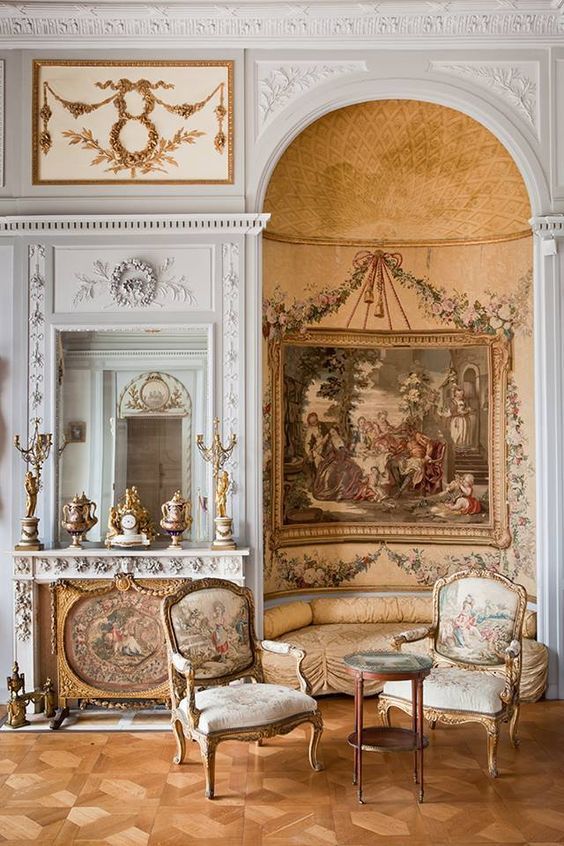
It is worth understanding the value for money, if we are talking about truly rare specimens, then the cost will be very high, but over time it can increase hundreds of times.
Independently, by eye, it is unlikely that a person who is not connected with the world of antiques or jewelry art will be able to determine the exact cost of antique jewelry. A real assessment requires knowledge and experience, so before buying, do not hesitate to seek help from professionals. The same applies to the sale of vintage items - choose those companies that have proven themselves in the market.
You need to understand some of the nuances of the antique jewelry market. For example, despite the fact that the rule applies here that the older the product, the more valuable it is evaluated, for example, there is an exception - sometimes, jewelry from the Soviet period is much more expensive than jewelry from the 19th century.
Obviously, genuine products are valued at times more expensive than fake ones.
Much depends on the design of the product. An exclusive is valued more than an assembly line product, even despite the difference in weight.
The material of the product, its sample, as well as the quantity, size and weight are also important.
It should be understood that almost every antique item was worn by someone before you, and it was not made five or even ten years ago, therefore, it is better to leave questions about whether it is not new and who was its owner , since the seller of antiques is unlikely to know who owned it. You can ask the seller about the designer and the manufacturer.
If you are buying antique jewelry online, please read the description carefully and look at the photos.
An antique piece of jewelry is an antique item that may have traces of time, which is quite natural, and this is what gives the item that very special chic of antiquity.
Perhaps the most important rule when choosing antique jewelry is that you must like the jewelry, otherwise, even if it is incredibly valuable and antique, you will not want to wear it.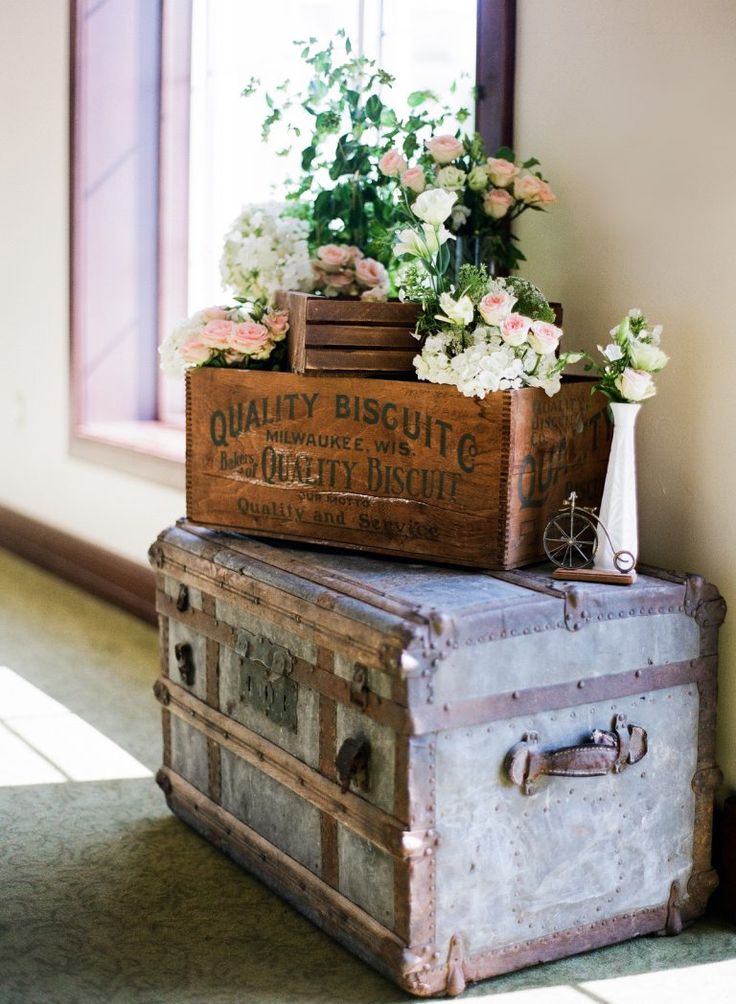
 For purely decorative purposes, antiques can also be found in unexpected places. At very low prices, collectible items are presented on the Internet at various marketplaces. Goods donated to charities often end up in thrift stores, and sometimes you can find valuable antiques with a price tag of just a few dollars. Flea markets, yard sales, real estate sales, boutiques and curio shops are another good source of common antiques at affordable prices.
For purely decorative purposes, antiques can also be found in unexpected places. At very low prices, collectible items are presented on the Internet at various marketplaces. Goods donated to charities often end up in thrift stores, and sometimes you can find valuable antiques with a price tag of just a few dollars. Flea markets, yard sales, real estate sales, boutiques and curio shops are another good source of common antiques at affordable prices.  You can make charming bar stools out of old tractor seats. An old pitchfork can be made into a curtain rod. A small stepladder hung on the wall will become an instant shelving unit for other collectibles.
You can make charming bar stools out of old tractor seats. An old pitchfork can be made into a curtain rod. A small stepladder hung on the wall will become an instant shelving unit for other collectibles. 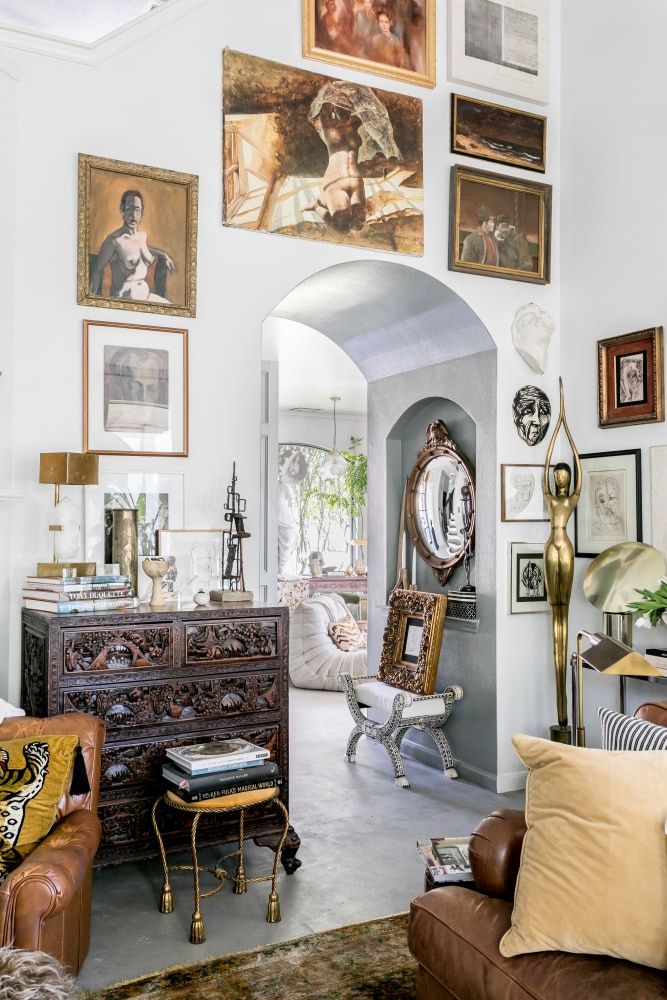 A modern wooden dining table can be paired with a set of Windsor chairs or chairs with a ladder back. A Queen Anne style chaise longue is the perfect addition to a contemporary bedroom. American ceramics 1940s or Depression era glass will add interest to a shelf in a modern kitchen. Family heirlooms are often paired with modern décor, such as an antique quilt that is used as a throw on a bed or sofa, or an antique rocking chair that sits comfortably by the fireplace. Antiques can also be an unusual or whimsical element in an eclectic room. Whether you pair antiques with similar items or display them as one of a kind, antiques can add character and charm to any home.
A modern wooden dining table can be paired with a set of Windsor chairs or chairs with a ladder back. A Queen Anne style chaise longue is the perfect addition to a contemporary bedroom. American ceramics 1940s or Depression era glass will add interest to a shelf in a modern kitchen. Family heirlooms are often paired with modern décor, such as an antique quilt that is used as a throw on a bed or sofa, or an antique rocking chair that sits comfortably by the fireplace. Antiques can also be an unusual or whimsical element in an eclectic room. Whether you pair antiques with similar items or display them as one of a kind, antiques can add character and charm to any home. 